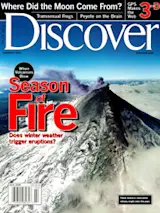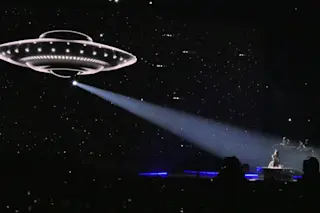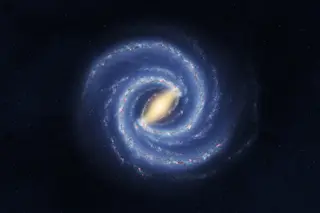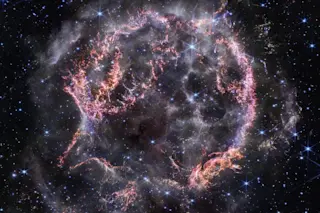Jonathan Feng of the University of California at Irvine has put a bizarre spin on recent cosmological models. He and his collaborators propose that much of the universe's mass consists of hidden particles that travel outside the familiar three dimensions. The idea is not just idle speculation: Feng has shown that some experiments could soon put his theory to the test. "It's mind-boggling if it's true—that would change everything," he says. Feng's group had been trying to understand dark matter, the unseen stuff inferred from its effects on visible galaxies. One possibility, they realized, is that dark matter consists of Kaluza-Klein particles, named for two physicists who postulated the existence of extra dimensions curled up tightly outside of the three we experience. "These extra dimensions are very small, so you can't see the particles zinging around in that direction. But that extra energy would manifest itself to us like a ...
Astronomers Search for Dimension X
Explore the theory of dark matter in extra dimensions, revealing hidden Kaluza-Klein particles and their cosmic implications.
More on Discover
Stay Curious
SubscribeTo The Magazine
Save up to 40% off the cover price when you subscribe to Discover magazine.
Subscribe













